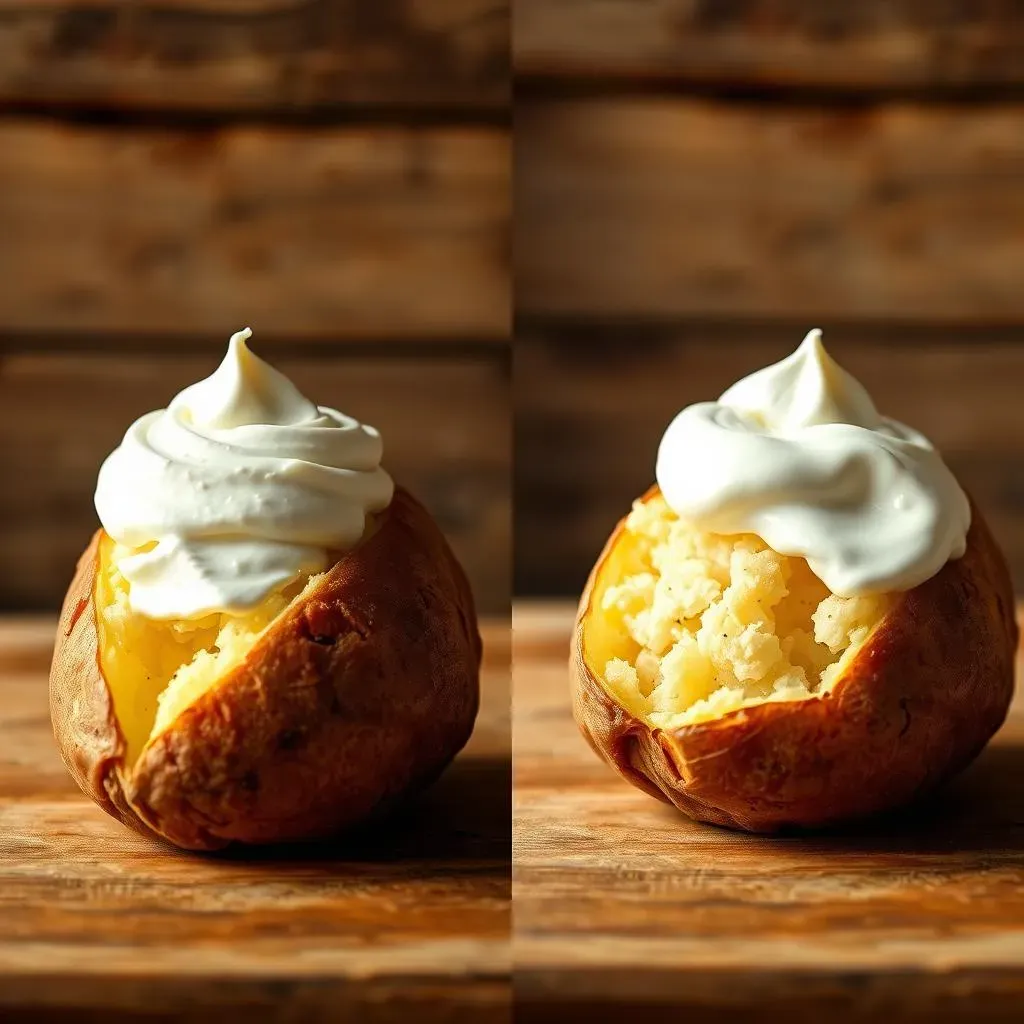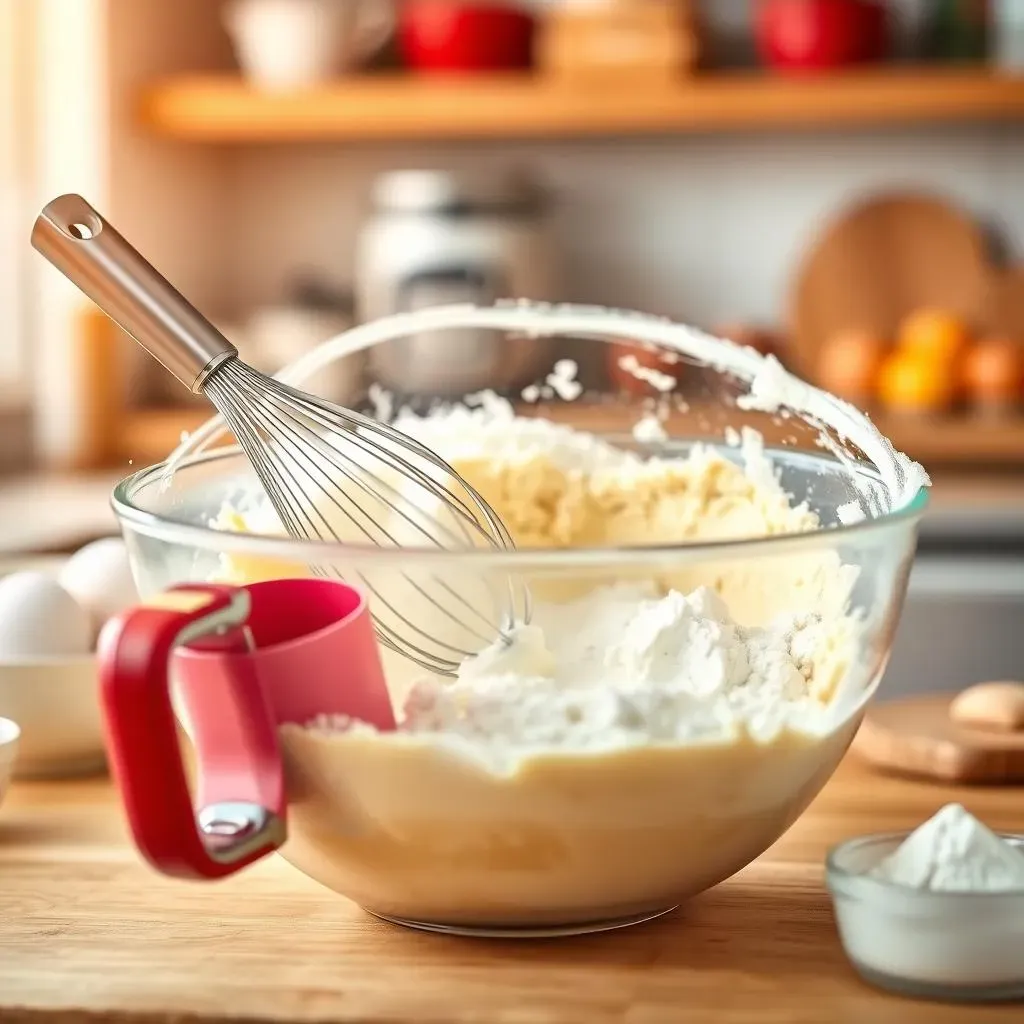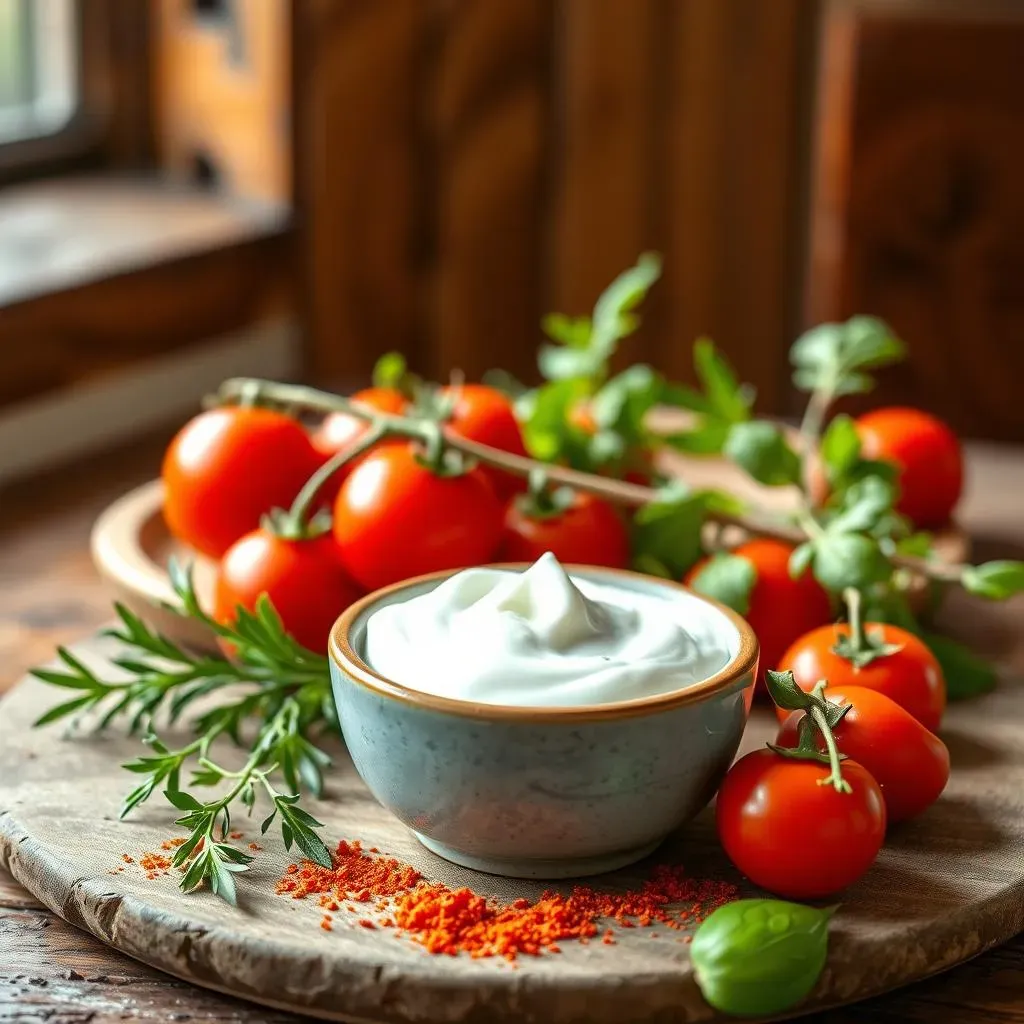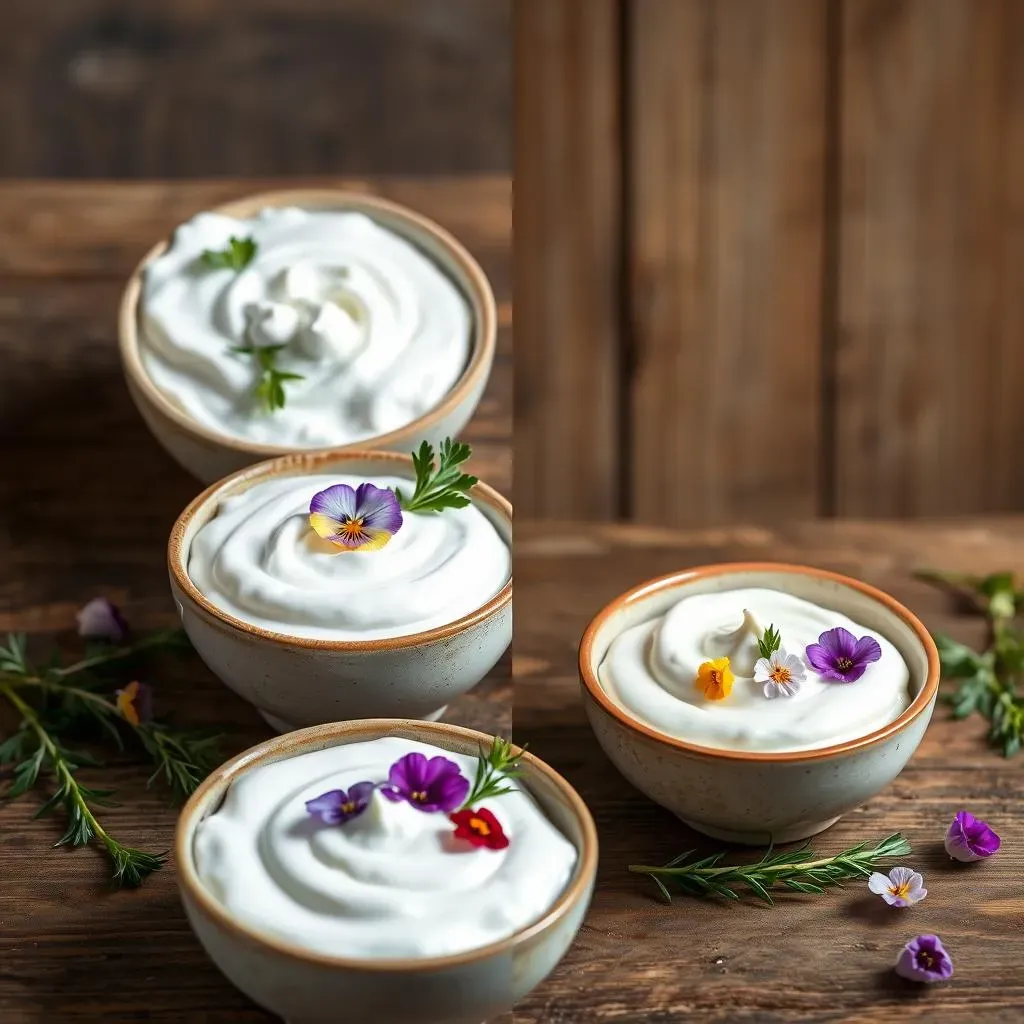Table of Contents
Ever stared blankly at a recipe, only to realize you're missing a key ingredient? Specifically, yogurt? And the only creamy dairy product you have on hand is sour cream? Don't despair! Today, we tackle the burning question: can sour cream substitute for yogurt? This isn't just about a simple swap; it's about understanding the nuances of these two dairy delights. We'll explore how their distinct flavors and textures impact the outcome in both sweet and savory dishes. First, we'll conduct a taste test, comparing the two side-by-side and considering their differences. Then, we'll dive into the world of baking, examining how sour cream affects the rise, moisture, and overall taste of baked goods when used in place of yogurt. Next, we'll explore the savory side, seeing how well sour cream holds up in dishes where yogurt is typically used. Finally, we'll consider other alternatives to yogurt if sour cream isn't quite the right fit for your recipe. So, let's unravel this creamy conundrum and discover whether sour cream can truly step in for yogurt—and when it might be best to reach for something else!
Sour Cream vs. Yogurt: A Taste Test

Sour Cream vs. Yogurt: A Taste Test
Texture Tango
Let's start with the feel. Sour cream boasts a thicker, richer texture, almost like a velvety cloud. Think of it as the heavyweight champion of creamy dairy. Yogurt, on the other hand, can range from a thin, drinkable consistency to a thicker, Greek-style version. But even the thickest Greek yogurt often lacks the same luxurious density as sour cream. It's more like a light-middleweight contender in the creamy dairy ring.
Think about spreading it on a baked potato. Sour cream clings beautifully, offering a rich, coating layer. Yogurt, especially the thinner varieties, might slip and slide off, leaving you wanting more. For a deeper dive into yogurt substitutes, check out our guide on substituting yogurt for sour cream. This comparison really highlights how different the textures can be.
Feature | Sour Cream | Yogurt |
|---|---|---|
Texture | Thick, rich, dense | Variable, thin to thick |
Spreadability | Excellent | Fair to good (depending on type) |
Tangy Showdown
Now for the taste! Both sour cream and yogurt offer a tangy kick, but their intensity varies significantly. Sour cream packs a bolder, more pronounced tang, a sharper bite that can cut through rich flavors. Think of it as the spicy jalapeno of the dairy world. Yogurt, while tangy, is usually milder, often described as pleasantly tart—more like a sweet bell pepper in comparison.
The level of tang also depends on the type of yogurt. Plain, full-fat yogurt tends to have a more pronounced tang than flavored or low-fat varieties. This makes it a closer match to sour cream in terms of flavor profile. Want to explore other creamy options? Learn more about substituting Greek yogurt for sour cream in your recipes.
- Sour cream: Bold, sharp tang
- Yogurt: Milder, pleasantly tart
The Fat Factor
Finally, let's consider the fat content. Sour cream is typically higher in fat than yogurt, contributing to its richer mouthfeel and creamier texture. This higher fat content also influences its flavor, adding a subtle richness that's absent in lower-fat yogurts. This difference is crucial when deciding whether to swap one for the other in a recipe.
The fat content in yogurt can vary greatly. Full-fat yogurt is closer to sour cream in fat content than low-fat or nonfat varieties. However, even full-fat yogurt usually contains less fat than sour cream. If you're looking for a lower-fat alternative to sour cream, yogurt could be a healthier choice, but remember to consider the impact on taste and texture. For more information on alternative dairy products, you might find our article on buttermilk as a sour cream substitute helpful.
Baking Battles: Sour Cream's Role in Baked Goods

Baking Battles: Sour Cream's Role in Baked Goods
Moisture Magic
Sour cream isn't just a flavor booster in baked goods; it's a moisture magician! Its high fat content prevents cakes and muffins from drying out, resulting in a tender, moist crumb. Think of it as the secret weapon against dryness. This is especially important in recipes where yogurt might leave things a bit on the dry side. That rich, creamy texture translates beautifully into a softer, more delightful final product. This is where sour cream really shines.
For instance, imagine a batch of cornbread. Swapping sour cream for milk can completely change the texture, resulting in a deliciously moist crumb, rather than a dry, crumbly one. For more tips on dairy substitutions, check out our article on using sour cream in cornbread. It's a game changer for this classic recipe.
- Adds moisture
- Creates tender crumb
- Prevents dryness
Rise and Shine
Believe it or not, sour cream can even impact the rise of your baked goods! Its acidity reacts with baking soda or powder, creating a subtle lift that contributes to a lighter, airier texture. This is especially noticeable in recipes like muffins or quick breads, where a good rise is crucial for success. It’s a subtle effect, but a noticeable one for those paying close attention.
Think of it like this: the acidity helps activate the leavening agents, giving your baked goods a little extra oomph. If you're looking for ways to enhance the texture of your cakes, check out our guide on substituting sour cream for heavy cream. It's all about that perfect balance of moisture and lift.
Ingredient | Effect on Baking |
|---|---|
Sour Cream | Adds moisture, enhances rise, creates tender crumb |
Yogurt | Adds moisture, but less impact on rise |
Flavor Fusion
Beyond texture and rise, sour cream contributes a distinct tangy flavor that can complement both sweet and savory baked goods. Its sharp, yet creamy taste can balance sweetness in cakes, cookies, and muffins, creating a delightful contrast that elevates the overall flavor profile. It's not just about moisture; it's about adding a depth of flavor.
In savory baked goods like scones or quick breads, the tang of sour cream adds a welcome complexity. It can cut through richness, providing a refreshing counterpoint to savory cheeses or herbs. If you’re interested in exploring other dairy options for baking, take a look at our article on substituting sour cream for yogurt in baking. There are many possibilities to explore!
Savory Substitutions: Sour Cream in NonSweet Dishes

Savory Substitutions: Sour Cream in NonSweet Dishes
Creamy Dream Team: Dips and Dressings
Sour cream's thick, rich texture and tangy flavor make it a star in dips and dressings. Think creamy spinach artichoke dip, a vibrant ranch dressing, or a zesty salsa. Its ability to cling to ingredients and coat them evenly makes it perfect for these applications. It adds a level of richness that yogurt simply can't match, especially in colder dips.
In a classic French onion dip, for instance, sour cream provides a creamy base that perfectly complements the savory onions and herbs. The tang cuts through the richness, creating a balanced and delicious flavor profile. For more options on creamy substitutes, check out our guide on sour cream as a creme fraiche substitute. It’s a surprisingly versatile ingredient!
- Adds creaminess and richness
- Enhances flavor profiles
- Provides excellent coating ability
Savory Sauces: A Tangy Twist
Sour cream also shines in savory sauces. It adds a creamy body and a tangy counterpoint to rich flavors, creating a well-rounded sauce that complements many dishes. Think of it as the secret ingredient to elevate your favorite recipes. It's not just about adding creaminess, it's about balancing flavors.
Consider a creamy tomato sauce for pasta. A dollop of sour cream adds a delightful tang that offsets the sweetness of the tomatoes. The result is a more complex and flavorful sauce. To explore more options for creamy sauces, see our article on using sour cream in quiche—a dish where creaminess is key.
Dish | Sour Cream's Role |
|---|---|
Dips | Adds creaminess, texture, and tang |
Sauces | Creates body, balances flavors, adds tang |
Beyond the Basics: Unexpected Uses
Sour cream's versatility extends beyond the expected. Its unique properties can even enhance seemingly unrelated dishes. It can add a surprising layer of complexity and creaminess to soups, stews, and even chili. Its subtle tang and rich texture add another dimension to the dish's flavor profile.
Imagine adding a spoonful of sour cream to a hearty beef stew. The richness and tang of the sour cream cut through the heavier flavors of the meat and vegetables, resulting in a more balanced and flavorful stew. For more unexpected uses of sour cream, check out our guide on sour cream in frosting (yes, really!). It’s a surprisingly versatile ingredient.
Dairy Dilemmas: Other Yogurt Alternatives

Dairy Dilemmas: Other Yogurt Alternatives
Beyond Sour Cream: Exploring Other Options
So, sour cream isn't always the perfect yogurt stand-in. What then? Don't worry, the dairy aisle (and beyond!) offers plenty of other alternatives, each with its own unique strengths and weaknesses. Let's explore some of the most popular choices.
Greek yogurt, for example, is often touted as a great sour cream substitute, particularly in baking. Its thicker consistency and tangy flavor make it a reasonable choice, but it might lack the richness of sour cream. For more details on this popular swap, check out our guide on using Greek yogurt instead of sour cream.
- Greek Yogurt
- Buttermilk
- Cream Cheese
Creamy Competitors: Buttermilk and Cream Cheese
Buttermilk, with its tangy bite and slightly thinner consistency, can be a good option in some recipes, particularly those where a slightly thinner texture is desired. However, it lacks the richness of sour cream, and its acidity might require adjustments to the recipe. Learn more about this dairy swap in our detailed guide on buttermilk as a sour cream substitute.
Cream cheese, on the other hand, offers a completely different profile. Its dense, rich texture and mild flavor are best suited for recipes that call for creaminess without a strong tang. It’s a rich and decadent alternative, but not a direct swap for the tangy notes of yogurt. If you're interested in creamy alternatives, our article on cream cheese as a sour cream substitute might be helpful.
Alternative | Texture | Flavor | Best Uses |
|---|---|---|---|
Greek Yogurt | Thick | Tangy | Baking, dips |
Buttermilk | Thin | Tangy | Baking (some recipes), sauces |
Cream Cheese | Dense | Mild | Frosting, dips (some recipes) |
Beyond Dairy: Vegan Options
For those avoiding dairy, there are plenty of vegan options to explore. Many plant-based sour cream alternatives mimic the creamy texture and tangy flavor of traditional sour cream, offering a delicious and dairy-free substitute. These options vary widely in taste and texture, so experimentation might be needed to find the perfect fit for your recipe.
These vegan alternatives usually rely on ingredients like coconut cream, cashews, or tofu to achieve the desired creamy texture. Their flavor profiles can range from subtly tangy to more intensely flavored, depending on the brand and specific ingredients. If you're interested in dairy-free options, you might find our comprehensive guide on ricotta as a sour cream substitute useful, even though it's not vegan.